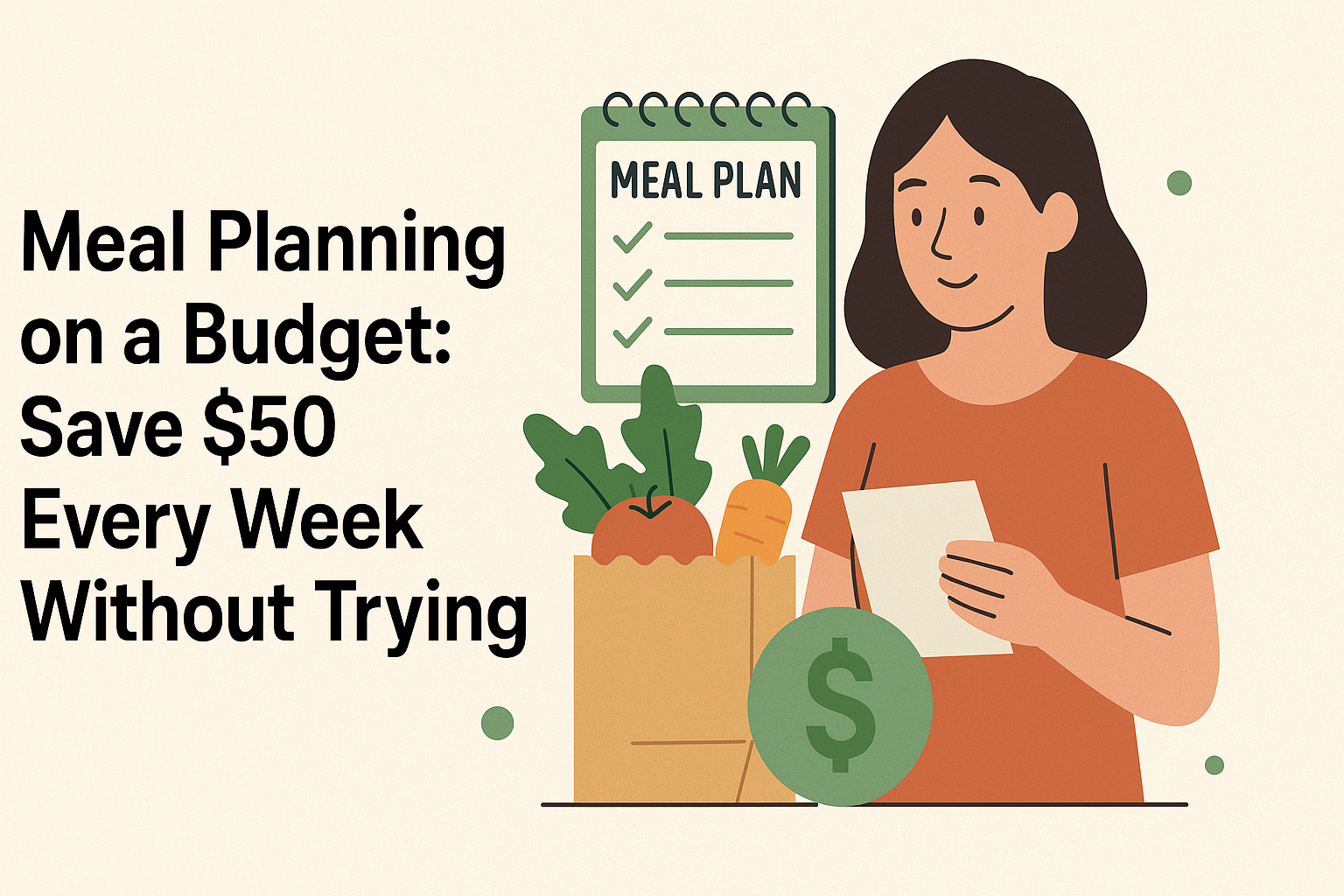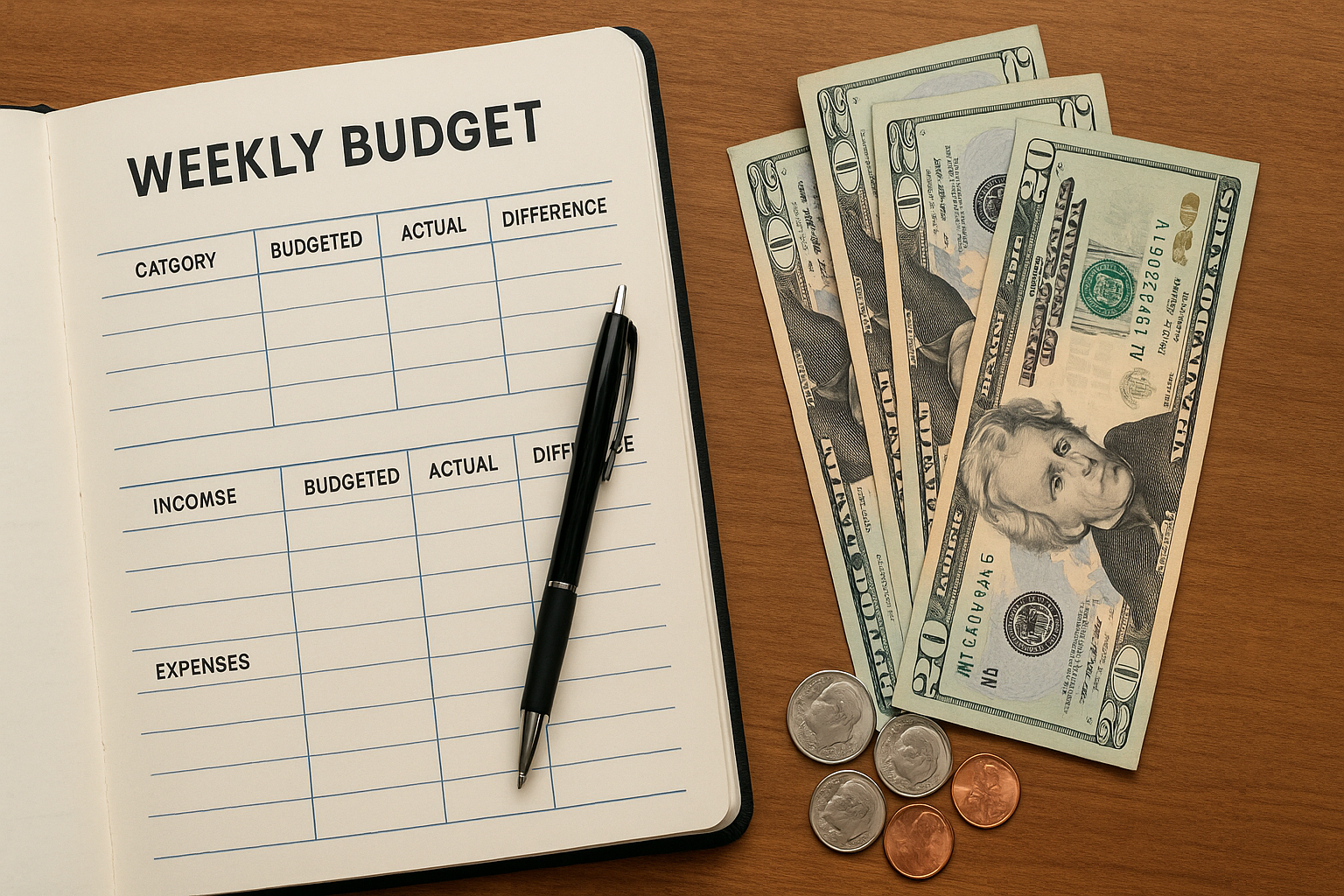Eating healthy and delicious meals doesn’t have to break the bank. In fact, with a little bit of planning, you can save $50 or more every week on groceries without compromising on taste or nutrition. Meal planning is the key to saving money while ensuring you have everything you need for the week ahead.
If you’ve ever stood in front of an open fridge, unsure of what to make for dinner, or found yourself throwing away food because it went bad, then meal planning is for you. Here’s how to plan your meals and save big—U.S. style.
1. Start with What You Already Have
Before you head to the grocery store, take stock of what’s already in your kitchen. Check your pantry, fridge, and freezer for items that are close to expiring or that you’ve forgotten about. You’d be surprised at how much food you already have on hand!
Take inventory and plan meals that use up what you already own. This will save you from buying duplicate items and ensure that nothing goes to waste.
2. Plan Simple, Flexible Meals
The beauty of meal planning is creating flexible meals that can be adapted based on what’s on sale or what you already have in your kitchen. For example:
-
Stir-fries (with rice, veggies, and protein)
-
Tacos (with ground meat or beans, tortillas, and toppings)
-
Pasta dishes (with marinara sauce, veggies, and protein)
-
Salads (using leftover protein, mixed greens, and fresh or frozen veggies)
By keeping things simple, you’ll save time and money. You can always swap out ingredients based on what’s available or on sale.
3. Stick to a Weekly Budget
If you want to save $50 every week, it’s essential to set a grocery budget. Start by tracking how much you typically spend each week on food, then adjust your budget based on your savings goals.
For example, if you usually spend $100 per week, aim to reduce your grocery bill to $50 by:
-
Buying store brands instead of name brands
-
Meal prepping in bulk
-
Shopping at discount stores (like Aldi or Walmart)
-
Using coupons or cashback apps like Ibotta or Rakuten
4. Buy in Bulk
One of the most effective ways to save money on groceries is to buy in bulk. Focus on purchasing items you use regularly and that have a long shelf life, like:
-
Rice
-
Pasta
-
Canned beans and vegetables
-
Frozen fruits and veggies
-
Chicken breasts or ground beef (if on sale)
Buying in bulk will save you money over time, especially when you divide the cost by the number of meals you’ll be able to make. You can freeze portions of meat or produce to keep it fresh longer.
5. Use Leftovers Wisely
Leftovers are your best friend when it comes to meal planning on a budget. Repurpose leftovers into new meals to get more value out of your cooking:
-
Leftover roast chicken can be turned into chicken salad, tacos, or soup.
-
Extra veggies from dinner can be added to a stir-fry or thrown into a homemade soup.
-
Rice or pasta can be turned into a stir-fry or mixed with beans for a budget-friendly bowl.
Not only does this reduce waste, but it also minimizes the need for extra cooking, saving both time and money.
6. Embrace Meatless Meals
Meat can be one of the most expensive items on your grocery bill. To cut costs, try including a few meatless meals each week. Some affordable, nutritious alternatives to meat include:
-
Beans and legumes (like black beans, lentils, and chickpeas)
-
Eggs (great for breakfast-for-dinner or a quick stir-fry)
-
Tofu or tempeh (a great protein source for stir-fries or salads)
-
Canned tuna or salmon (perfect for sandwiches, salads, or casseroles)
By swapping in plant-based proteins, you can save big and enjoy a variety of delicious meals.
7. Create a Shopping List and Stick to It
Before heading to the store, create a detailed shopping list based on your meal plan for the week. Stick to the list—no impulse buys or random items that aren’t on your plan. When shopping, consider using a grocery app (like AnyList or Instacart) to help you stay organized and on track.
Shopping with a list also prevents you from buying convenience foods that are often more expensive, like pre-cut vegetables or ready-to-eat meals.
8. Shop Seasonally and Locally
Buying fruits and vegetables that are in season can save you money while ensuring your meals are fresh and flavorful. Produce that’s in season tends to be less expensive, and local markets may offer discounts for fresh, in-season items.
Check out your local farmers’ market or grocery store for seasonal produce—summer might be perfect for fresh tomatoes, berries, and zucchini, while winter offers affordable root vegetables and hearty greens.
9. Use Meal Prep to Maximize Your Time and Budget
Spend an hour or two prepping meals at the beginning of the week to save time and money later. Chop vegetables, cook grains, or marinate meat so that your meals are ready to go when you need them.
When you prep in advance, you’re less likely to grab takeout or eat out, which can quickly eat into your budget. Plus, meal prepping makes it easier to stick to your plan and avoid unnecessary impulse purchases.
Final Thoughts
Meal planning on a budget doesn’t have to be difficult, and you don’t have to sacrifice quality or flavor to save money. By making a plan, buying in bulk, using leftovers, and incorporating affordable ingredients, you can easily save $50 (or more) every week.
Start small, stay organized, and remember: the more consistent you are with your meal planning, the more money you’ll save—and the better you’ll eat!
Ready to start saving on your grocery bill? Subscribe to Active With Us for more meal planning tips and budget-friendly recipes!




